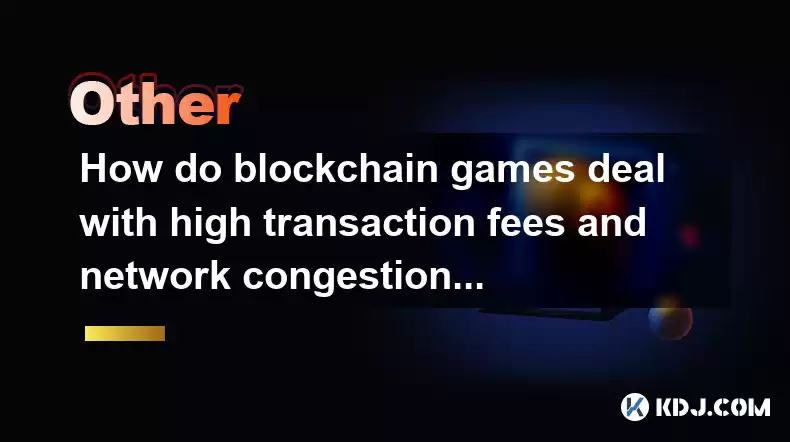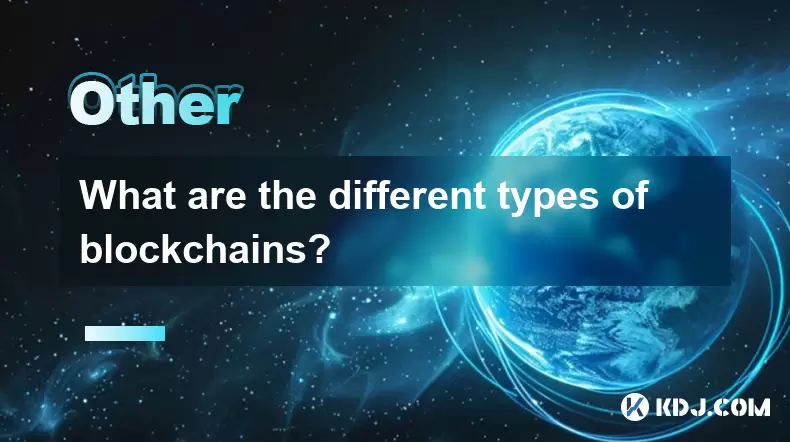-
 Bitcoin
Bitcoin $112400
-1.07% -
 Ethereum
Ethereum $3409
-3.27% -
 XRP
XRP $2.784
-6.60% -
 Tether USDt
Tether USDt $0.9997
-0.03% -
 BNB
BNB $739.3
-2.09% -
 Solana
Solana $158.0
-2.90% -
 USDC
USDC $0.9998
-0.02% -
 TRON
TRON $0.3213
-0.94% -
 Dogecoin
Dogecoin $0.1929
-5.01% -
 Cardano
Cardano $0.6974
-2.82% -
 Hyperliquid
Hyperliquid $36.69
-2.31% -
 Sui
Sui $3.327
-4.80% -
 Stellar
Stellar $0.3672
-5.18% -
 Chainlink
Chainlink $15.65
-3.07% -
 Bitcoin Cash
Bitcoin Cash $525.0
-1.68% -
 Hedera
Hedera $0.2291
-6.00% -
 Avalanche
Avalanche $20.91
-2.96% -
 Ethena USDe
Ethena USDe $1.000
0.00% -
 Toncoin
Toncoin $3.520
-1.12% -
 UNUS SED LEO
UNUS SED LEO $8.968
0.14% -
 Litecoin
Litecoin $105.7
0.26% -
 Shiba Inu
Shiba Inu $0.00001181
-1.79% -
 Polkadot
Polkadot $3.492
-2.08% -
 Uniswap
Uniswap $8.800
-3.10% -
 Dai
Dai $0.9999
-0.01% -
 Monero
Monero $289.9
-3.17% -
 Bitget Token
Bitget Token $4.243
-1.27% -
 Pepe
Pepe $0.00001006
-3.67% -
 Cronos
Cronos $0.1248
-5.68% -
 Aave
Aave $249.7
-2.50%
How do blockchain games deal with high transaction fees and network congestion?
Blockchain games tackle high fees and congestion with Layer 2 solutions like sidechains and rollups, transaction batching, alternative blockchains, gasless transactions, and dynamic fee adjustments.
Apr 15, 2025 at 04:15 pm

Blockchain games have become increasingly popular, but they often face challenges related to high transaction fees and network congestion. These issues can significantly impact the gaming experience, making it essential for developers to implement effective strategies to mitigate them. This article explores how blockchain games address these problems and provides detailed insights into the various solutions employed.
Understanding High Transaction Fees and Network Congestion
High transaction fees and network congestion are common issues in the blockchain space, particularly on networks like Ethereum. When a blockchain game requires numerous transactions to function, the costs can quickly escalate, and the network can become congested, leading to slower transaction times. These problems can deter players and affect the game's overall performance.
Layer 2 Solutions
One of the primary ways blockchain games address high transaction fees and network congestion is by utilizing Layer 2 solutions. Layer 2 refers to a secondary framework or protocol built on top of an existing blockchain, designed to improve scalability and reduce transaction costs.
Sidechains: Some games use sidechains, which are separate blockchains that run parallel to the main chain. They allow for faster and cheaper transactions, which are later settled on the main blockchain. For example, games like Gods Unchained use the Immutable X sidechain to process transactions off the Ethereum mainnet, significantly reducing fees and speeding up transaction times.
State Channels: Another popular Layer 2 solution is state channels, which enable multiple transactions to be processed off-chain and then settled on the blockchain in a single transaction. This approach is particularly useful for games that require frequent, small transactions. For instance, FunFair uses state channels to facilitate rapid, low-cost transactions within its gaming platform.
Rollups: Rollups are another Layer 2 technology that aggregates multiple transactions into a single batch, which is then processed on the main blockchain. This method reduces the load on the network and lowers transaction fees. Games like Axie Infinity have implemented rollups to manage their transaction volume more efficiently.
Optimizing Transaction Batching
Transaction batching is another technique used by blockchain games to deal with high transaction fees and network congestion. By grouping multiple transactions into a single batch, games can reduce the number of individual transactions that need to be processed on the blockchain, thereby lowering costs and reducing the strain on the network.
Batching in Practice: For example, a game might batch together multiple in-game purchases or asset transfers into one transaction. This approach not only reduces fees but also speeds up the overall transaction process. Games like CryptoKitties have implemented batching to manage their high transaction volumes more effectively.
Smart Contract Optimization: To further enhance transaction batching, developers often optimize their smart contracts to handle batch transactions more efficiently. This can involve rewriting parts of the smart contract code to minimize gas usage and streamline the transaction process.
Using Alternative Blockchains
Some blockchain games opt to build on alternative blockchains that offer lower transaction fees and better scalability compared to more congested networks like Ethereum.
Binance Smart Chain: For instance, games like PancakeSwap have moved to the Binance Smart Chain (BSC), which offers significantly lower transaction fees and faster transaction times than Ethereum. This shift allows games to provide a smoother and more cost-effective experience for players.
Polygon: Another popular choice is Polygon, a Layer 2 scaling solution for Ethereum that provides fast and cheap transactions. Games like Aavegotchi have migrated to Polygon to take advantage of its scalability features and reduce the impact of high transaction fees on their players.
Implementing Gasless Transactions
Gasless transactions are another innovative solution used by some blockchain games to address high transaction fees. In a gasless transaction system, the game itself covers the transaction fees, allowing players to interact with the game without worrying about the costs.
Meta Transactions: One way to implement gasless transactions is through meta transactions, where a third party (often the game developer) pays the gas fees on behalf of the user. This approach is used by games like OpenSea, which allows users to list and purchase NFTs without paying gas fees directly.
Sponsored Transactions: Another method is sponsored transactions, where the game or a sponsor covers the transaction costs. This can be particularly appealing to players, as it removes the barrier of high transaction fees and encourages more engagement with the game.
Dynamic Fee Adjustment
Some blockchain games employ dynamic fee adjustment mechanisms to manage transaction fees more effectively. By adjusting fees based on network conditions, games can ensure that transactions are processed quickly and at a reasonable cost.
Fee Estimation Algorithms: Games can use fee estimation algorithms to predict the optimal fee for a transaction based on current network congestion. This helps ensure that transactions are processed quickly without overpaying for gas.
Adaptive Fee Models: Some games implement adaptive fee models that automatically adjust transaction fees in response to changes in network conditions. This approach can help maintain a smooth gaming experience even during periods of high network congestion.
Frequently Asked Questions
Q: Can blockchain games completely eliminate transaction fees?
A: While blockchain games can significantly reduce transaction fees through various strategies, completely eliminating them is challenging. Some games use gasless transactions to cover fees on behalf of players, but this cost is still borne by the game or a sponsor.
Q: How do Layer 2 solutions impact the security of blockchain games?
A: Layer 2 solutions can enhance the scalability and efficiency of blockchain games, but they may introduce additional security considerations. While the underlying blockchain's security remains intact, the security of the Layer 2 solution itself depends on its design and implementation. Games must carefully select and implement Layer 2 solutions to ensure they maintain a high level of security.
Q: Are there any drawbacks to using alternative blockchains for gaming?
A: Using alternative blockchains can offer benefits like lower fees and better scalability, but it may also come with drawbacks. For instance, some alternative blockchains may have less robust security or fewer developer tools compared to more established networks like Ethereum. Games must weigh these factors when deciding which blockchain to use.
Q: How do players benefit from transaction batching in blockchain games?
A: Players benefit from transaction batching as it reduces the overall cost of interacting with the game. By grouping multiple transactions into a single batch, games can lower the fees players need to pay, making the gaming experience more affordable and enjoyable.
Disclaimer:info@kdj.com
The information provided is not trading advice. kdj.com does not assume any responsibility for any investments made based on the information provided in this article. Cryptocurrencies are highly volatile and it is highly recommended that you invest with caution after thorough research!
If you believe that the content used on this website infringes your copyright, please contact us immediately (info@kdj.com) and we will delete it promptly.
- BlockDAG, SEI, Ethena: Top Crypto Performers Under the Microscope
- 2025-08-03 10:50:16
- Bitcoin Blasts Past $119K: How Institutional Adoption and Macro Shifts Fuel the Fire
- 2025-08-03 10:55:16
- Crypto, Grok, and August: Decoding the Latest Trends and Insights
- 2025-08-03 11:10:16
- Crypto, Phishing, and Your Wallet: A New Yorker's Guide to Staying Safe
- 2025-08-03 10:30:16
- Troller Cat Meme Coin Presale Soars: A New King in the Crypto Jungle?
- 2025-08-03 10:30:16
- Grayscale, Altcoin Trust, and Mid-Cap Mania: What's the Deal?
- 2025-08-03 08:50:16
Related knowledge

What is the difference between on-chain and off-chain transactions?
Aug 02,2025 at 04:22pm
Understanding On-Chain TransactionsOn-chain transactions refer to digital asset transfers that are recorded directly on a blockchain ledger. These tra...

What is the double-spending problem and how does blockchain prevent it?
Aug 02,2025 at 01:07pm
Understanding the Double-Spending ProblemThe double-spending problem is a fundamental challenge in digital currency systems where the same digital tok...

What is the difference between a blockchain and a database?
Aug 01,2025 at 09:36pm
Understanding the Core Structure of a BlockchainA blockchain is a decentralized digital ledger that records data in a series of immutable blocks linke...

How does blockchain handle scalability?
Aug 02,2025 at 02:58pm
Understanding Blockchain Scalability ChallengesBlockchain scalability refers to a network's ability to handle an increasing volume of transactions wit...

What are the different types of blockchains?
Aug 03,2025 at 03:01am
Public Blockchains: Open and Decentralized NetworksPublic blockchains are the most widely recognized type of blockchain, characterized by their open a...

What is a hash in a blockchain?
Aug 02,2025 at 05:28am
Understanding the Concept of Hash in BlockchainA hash in the context of blockchain technology refers to a unique digital fingerprint generated by a cr...

What is the difference between on-chain and off-chain transactions?
Aug 02,2025 at 04:22pm
Understanding On-Chain TransactionsOn-chain transactions refer to digital asset transfers that are recorded directly on a blockchain ledger. These tra...

What is the double-spending problem and how does blockchain prevent it?
Aug 02,2025 at 01:07pm
Understanding the Double-Spending ProblemThe double-spending problem is a fundamental challenge in digital currency systems where the same digital tok...

What is the difference between a blockchain and a database?
Aug 01,2025 at 09:36pm
Understanding the Core Structure of a BlockchainA blockchain is a decentralized digital ledger that records data in a series of immutable blocks linke...

How does blockchain handle scalability?
Aug 02,2025 at 02:58pm
Understanding Blockchain Scalability ChallengesBlockchain scalability refers to a network's ability to handle an increasing volume of transactions wit...

What are the different types of blockchains?
Aug 03,2025 at 03:01am
Public Blockchains: Open and Decentralized NetworksPublic blockchains are the most widely recognized type of blockchain, characterized by their open a...

What is a hash in a blockchain?
Aug 02,2025 at 05:28am
Understanding the Concept of Hash in BlockchainA hash in the context of blockchain technology refers to a unique digital fingerprint generated by a cr...
See all articles

























































































